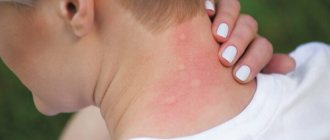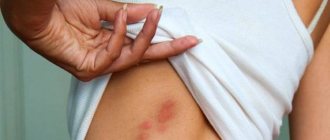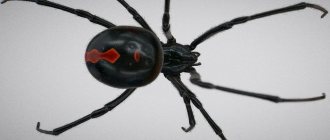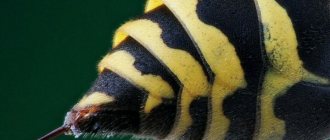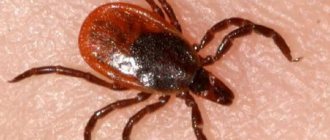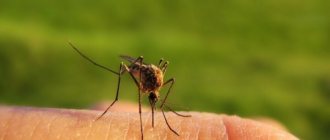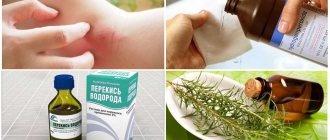Symptoms of a malaria parasite bite
Many people, reptiles, and mammals suffer from malaria. A mosquito bite can cause the following symptoms:
- convulsions;
- tingling in the skin;
- increase in the size of the spleen;
- chills;
- joint pain;
- blood in urine;
- Strong headache;
- fever;
- vomit;
- anemia;
- cerebral ischemia.
Fever is one of the signs of a malaria mosquito bite
A mosquito bite is deadly. Pregnant women and children are most vulnerable. The following happens in the body after a bite:
- 30 minutes after the bite, the parasites go to the liver. There they begin to develop.
- The liver begins to grow, its cells die.
- Microbes enter the blood, which leads to the destruction of red cells.
- Each microbe is divided into several parts.
- Due to damage to blood cells, anemia develops. There is fever and chills.
- Chills alternate with fever. Attacks occur every 3 days. Death occurs due to blockage of the blood vessels of the brain.
How to prevent a bite?
The malaria mosquito can cause many different problems and its bites can lead to severe infectious diseases. Anopheles is dangerous only in the dark; during the day they hide in secluded and quiet places. So, if a person goes fishing or hunting, he will have to take protective measures.
Means of protection:
- Mosquito net in the house.
- An ultrasonic repeller is an ideal protection that will be harmless to health.
- Repeller for emitting various odors.
- Fumigators.
- Traps - there is a large selection of traps on the market that imitate human body temperature and odor.
- Sticky tape traps.
- Fumigation of an area of the house with smoke and aroma lamps.
How to distinguish malaria mosquitoes from ordinary ones (video)
Malaria in pregnant women
If a pregnant woman is bitten by a malaria mosquito, a number of adverse symptoms may occur. In some cases, premature births, deaths, and eclampsia in pregnant women are observed.
Malaria in children
If a malaria mosquito bites a child, the case is serious. This can be fatal. Up to 6 months of age, children rarely get sick; they have passive immunity from women. Fatal outcome is often observed in children from 6 months to 5 years. The clinical symptoms in this case are peculiar. The most striking symptom is absent - paroxysm. In this case, such qualities as chills at the beginning of the disease and sweating at the end, cramps, pain in the abdomen, diarrhea, and vomiting may appear.
Rashes such as spots or hemorrhage are often observed on the skin. Anemia develops quickly. In older children, the disease progresses as in adults.
Malaria patient looks apathetic
Description of the bloodsucker
Malaria mosquitoes go through the same life cycle as regular mosquitoes.
It can be described in 4 stages of development:
- Egg . The female lays eggs only if she is well-fed and can feed her offspring. The insect tries to place them in stagnant water - ponds, lakes, swamps. The malaria mosquito lays eggs one at a time on the surface, while the common squeaker lays a sticky clump of eggs. About 200 eggs are contained in each clutch. After 2-4 days, the eggs turn into larvae under favorable conditions or die.
- Larvae . At this stage, the insect can have a large chest and head. The larvae do not have a respiratory siphon, so they are forced to stay near the surface of the water. The larvae mature in 4 to 6 days, going through several stages of molting.
- Pupae . The insect's body becomes a single whole; the head or other parts are very difficult to identify. The pupae are still forced to surface to breathe.
- Imago . An adult mosquito emerges from the pupa after about 5-7 days. An adult specimen has an elongated body on which a miniature head is located. The proboscis and elongated hind limbs are clearly visible. This is the last stage of development of the bloodsucker.
The first three stages of the appearance of the insect take place within 10-14 days. This range of appearance depends on several factors: water and air temperature, aggressiveness and composition of water, etc. An adult mosquito lives 2-4 weeks.
( Video : “Malaria mosquitoes”)
Patient's appearance
A malaria patient looks apathetic. He often experiences weakness, so for the most part the person remains in bed. The skin is pale and moist. The skin is icteric. Often the patient is exhausted. The presented symptoms are characteristic of fever. The fever is often followed by high sweating. Yellowness of the skin indicates the duration of the disease, damage to the spleen and liver.
You may also be interested in the article “Subcutaneous parasites in humans: diseases and methods of their treatment.”
What does a malaria mosquito look like: the structure of the insect
Mosquito eyes
The mosquito's eyes are scalloped and consist of many ommatidia.
Rice. 5. The mosquito's eyes are scalloped and consist of many ommatidia.
Oral apparatus
The oral apparatus of mosquitoes is a piercing and cutting instrument represented by a proboscis, which consists of the upper and lower lips, the hypopharynx (subpharynx) and two pairs of upper (mandibles) and lower (maxilla) jaws.
The lower lip is a tube. It serves as a support for stabbing stilettos. Blood passes through it as it is absorbed. Blood is consumed only by females, for whom it serves as a nutrient for the maturation of eggs. Males feed only on plant juices, so the piercing parts of their oral apparatus are atrophied.
The organs of touch and taste in mosquitoes are 5-segmented palps extending from the base of the lower jaws. Their length and shape serve as distinctive features of malarial and non-malarial mosquitoes: in malarial mosquitoes, the palps and the length of the proboscis are equal in length and have club-shaped thickenings at the ends; in non-malarial mosquitoes, the palps are longer than the proboscis and do not have club-shaped thickenings at the ends.
Rice. 6. The structure of malaria mosquitoes.
Antennas
Antennas or antennae located on the front surface of the head perform the function of recognizing smells and touch. In males, the antennae are covered with thick and fluffy hairs, in females they are short and sparse.
Legs, wings and halteres
The malaria mosquito has a pair of wings, three pairs of thin legs and halteres, which are attached to the mosquito's chest.
Mosquito wings
The wings of malaria mosquitoes are elongated-oval with a large number of transverse and longitudinal veins, covered with microtrichia (small hairs). Different types of mosquitoes have their own patterns. Malaria mosquitoes have 4 brown spots on their wings. Non-malarial mosquitoes have alternating dark and light spots. When the Anopheles mosquito is at rest, its wings are folded horizontally along its abdomen.
Abdomen
The abdomen of mosquitoes consists of ten segments, the ninth and tenth of which form part of the external genitalia. The body of mosquitoes is elongated, the head is small, and the legs are long. When landing, mosquitoes of the genus Anopheles have the posterior part of the abdomen raised; in non-malarial mosquitoes, the abdomen is parallel to the skin.
Rice. 7. Bite of female malarial (photo on the left) and non-malarial (photo on the right) mosquitoes.
Rice. 8. The structure of a mosquito of the genus Culex (picture on the left) and Anopheles (photo on the right).
First aid
If you are bitten by a malaria mosquito, you may experience a general or local reaction. At the site of the bite there is inflammation, swelling, and burning pain. After a couple of hours, the initial symptoms disappear.
Often a person experiences a stressful condition. It is based on overexcitation of the body. If a person is hypersensitive to poisons, an allergic reaction may occur. It is marked by reactions such as asthma, urticaria, anaphylactic shock.
If a person has an increased sensitivity to poisons, an allergic reaction may occur in the form of hives
First aid is to wash the wound with alcohol. Something cold should be applied to the fireplace. Next, the bitten person is put to bed and given strong coffee or tea. If vascular or cardiac activity declines, the following is administered:
- cordiamine;
- caffeine;
- adrenaline subcutaneously.
If the patient's condition has not improved, he should be urgently sent to a medical facility. A person is given “Suprastin” or “Diphenhydramine” - 1 tablet (against allergies).
Where there is a threat of being bitten by a malaria mosquito, everything should be done to destroy the source of infection. Mosquitoes can become carriers of anthrax, malaria, and intestinal infections. If there are cases of infection with dangerous diseases, they should be treated by a specialist.
To prevent a bite, use repellents and protective nets, and lubricate the skin with other products. If this is not the case, use gauze or handkerchiefs to cover exposed parts of the body.
Use repellent to prevent being bitten
Regular parsley will help relieve itching. Pluck it, mash it and lubricate the affected area with the juice of the plant. After 20 minutes, there will be nothing left on the body except a reddish spot, reminiscent of a syringe mark.
If you are planning to spend the night outdoors, cover exposed areas of your body with the leaves of burdock or other plants. Bonfires help a lot - flying parasites are afraid of them. It's better to sleep in clothes.
What to do if you are bitten by a malaria mosquito?
If you have been bitten by a mosquito and you notice severe itching, swelling and redness at the site of the bite, you should treat the affected area of skin with an alcohol solution. After treatment, apply ice to the bite site. When heart failure occurs, caffeine is administered. If the patient's condition does not improve, it is necessary to call an ambulance. In the hospital, the patient will be given antihistamines: suprastin, loratadine or diphenhydramine.
Photo of a mosquito bite
Knowing what to do if you are bitten, you will be able to provide emergency assistance in case of urgent need for yourself and your loved ones. To avoid contracting malaria, use preventive measures.
Prevention will help protect yourself from blood-sucking insects. When going for a walk in the forest, wear clothes made of thick fabric and make sure that they cover your entire body. Repellent protective products can repel malaria and ordinary mosquitoes, use them. If you are going camping overnight, light a fire. Insects are afraid of fire and stay away from it.
Experts' opinion
Experts recommend that people who have had malaria be under the supervision of medical personnel for 2 years. If there is a fever, you should donate blood for testing.
The disease is preventable. People traveling to areas where the mosquito is infected should take anti-malarial medications. When living in areas of potential threat, you should cover windows and doors with mesh or sleep under a special mesh canopy. It is better if it is treated with an insecticide. From the beginning of twilight until dawn, hands and feet should be well protected. Exposed parts of the body must be treated with repellents.

